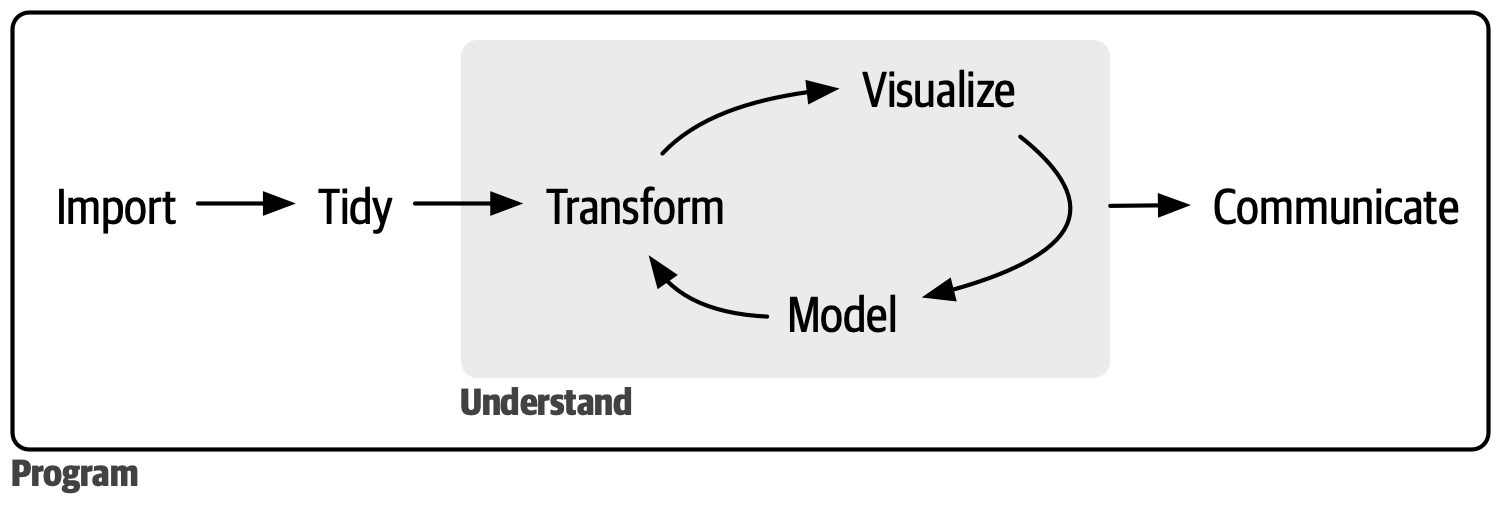Intro to Data Modeling
Data Modeling

Inference vs. Prediction
- Inference:
- understanding relationships and testing hypotheses about how variables interact
- explain the underlying mechanisms and relationships in the data
- How does education relates to income?
Inference vs. Prediction
- Prediction:
- generating accurate estimates of future or unknown values
- optimizing the model’s ability to make correct predictions
- Accurately forecast someone’s income based on their education level.
Inference vs. Prediction
- Inference models prioritize interpretability and often use simpler, more transparent methods like linear regression
- Prediction models may use more complex “black box” approaches like neural networks if they improve accuracy
Inference vs. Prediction
- In inference, you carefully choose variables based on theory and prior research
- For prediction, you might include any feature that improves predictive performance, even if the relationship isn’t theoretically clear (! careful with this approach)
Inference vs. Prediction
- Inference focuses on metrics like p-values, confidence intervals, and effect sizes
- Prediction emphasizes metrics like mean squared error, classification accuracy, or the area under the ROC curve (AUC)
Inference vs. Prediction
Overfitting concerns
- both approaches need to address overfitting
- it’s especially critical in prediction
- inference models might accept slightly worse fit for better interpretability
- prediction models focus heavily on cross-validation and out-of-sample performance
Inference
For interpreting statistical models, we will be using the statsmodels Python package
Ordinary Least Squares (OLS) regression
OLS is a method that finds the best-fitting straight line through a set of points by minimizing the sum of squared vertical distances between the data points and the line.
The goal is to find a line y = β₀ + β₁x that best fits your data, where:
- β₀ is the y-intercept
- β₁ is the slope
- x is your independent variable – or feature(s)
- y is your dependent variable – or target
Ordinary Least Squares (OLS) regression
For each data point, OLS:
- Calculates the vertical distance (residual) between the actual y-value and the predicted y-value
- Squares these distances (to make negatives positive and penalize larger errors more)
- Sums all squared distances
- Finds the line that minimizes this sum
Ordinary Least Squares (OLS) regression
Key Assumptions:
- Linear relationship between variables
- Independent observations
- Homoscedasticity (constant variance in errors)
- Normally distributed errors
- No perfect multicollinearity
Ordinary Least Squares (OLS) regression
Advantages:
- Simple to understand and implement
- Best Linear Unbiased Estimator (BLUE) under certain conditions
- Computationally efficient
- Clear interpretation of results
Ordinary Least Squares (OLS) regression
Limitations:
- Sensitive to outliers
- Assumes linear relationships
- May not capture complex patterns
- All predictors must be independent
OLS regression in statsmodels
OLS regression results
OLS Regression Results
==============================================================================
Dep. Variable: survived R-squared: 0.366
Model: OLS Adj. R-squared: 0.365
Method: Least Squares F-statistic: 255.2
Date: Tue, 11 Feb 2025 Prob (F-statistic): 3.19e-88
Time: 14:23:34 Log-Likelihood: -417.77
No. Observations: 887 AIC: 841.5
Df Residuals: 884 BIC: 855.9
Df Model: 2
Covariance Type: nonrobust
==============================================================================OLS regression results
coef std err t P>|t| [0.025 0.975]
------------------------------------------------------------------------------
const 1.0825 0.040 26.795 0.000 1.003 1.162
pclass -0.1577 0.016 -10.029 0.000 -0.189 -0.127
sex -0.5161 0.027 -18.776 0.000 -0.570 -0.462
==============================================================================
Omnibus: 40.150 Durbin-Watson: 1.921
Prob(Omnibus): 0.000 Jarque-Bera (JB): 44.755
Skew: 0.549 Prob(JB): 1.91e-10
Kurtosis: 3.060 Cond. No. 9.07
==============================================================================
Notes:
[1] Standard Errors assume that the covariance matrix of the errors is correctly specified.OLS regression results
- What other variables can you add to the model?
- How does the model change?
OLS regression results
Run OLS regression on this kaggle dataset on house prices